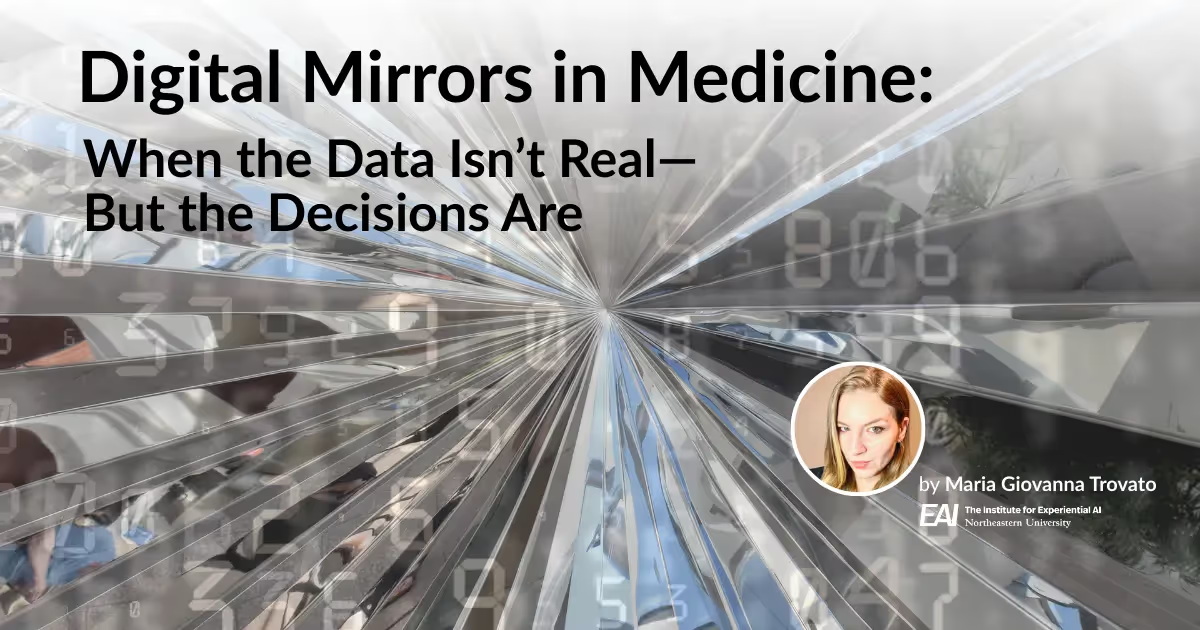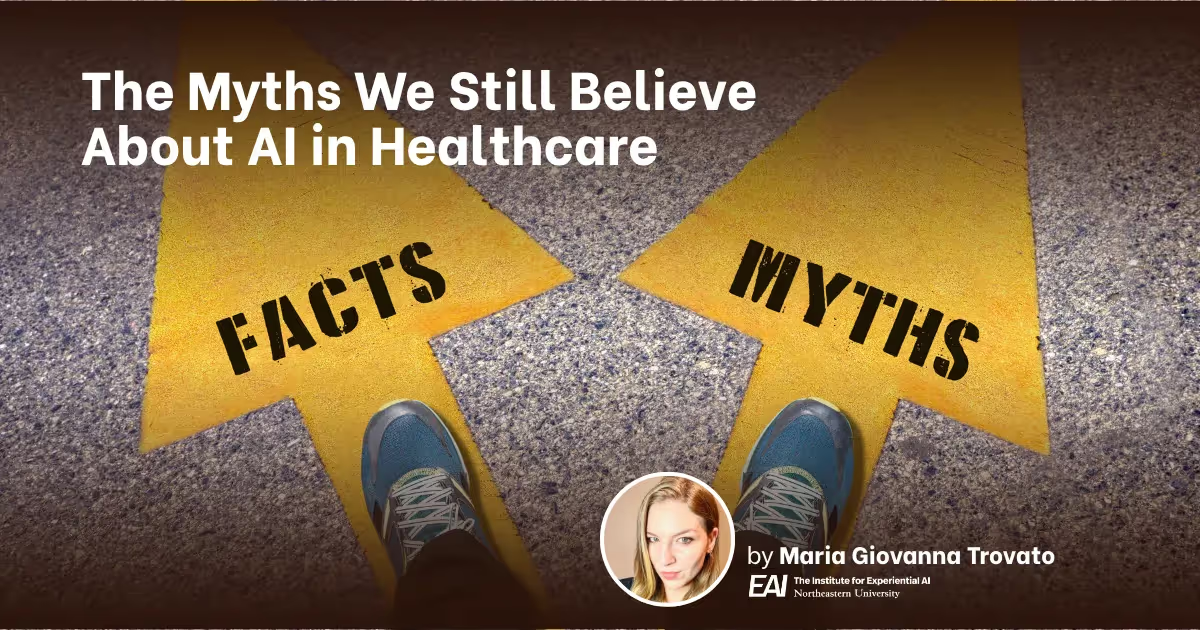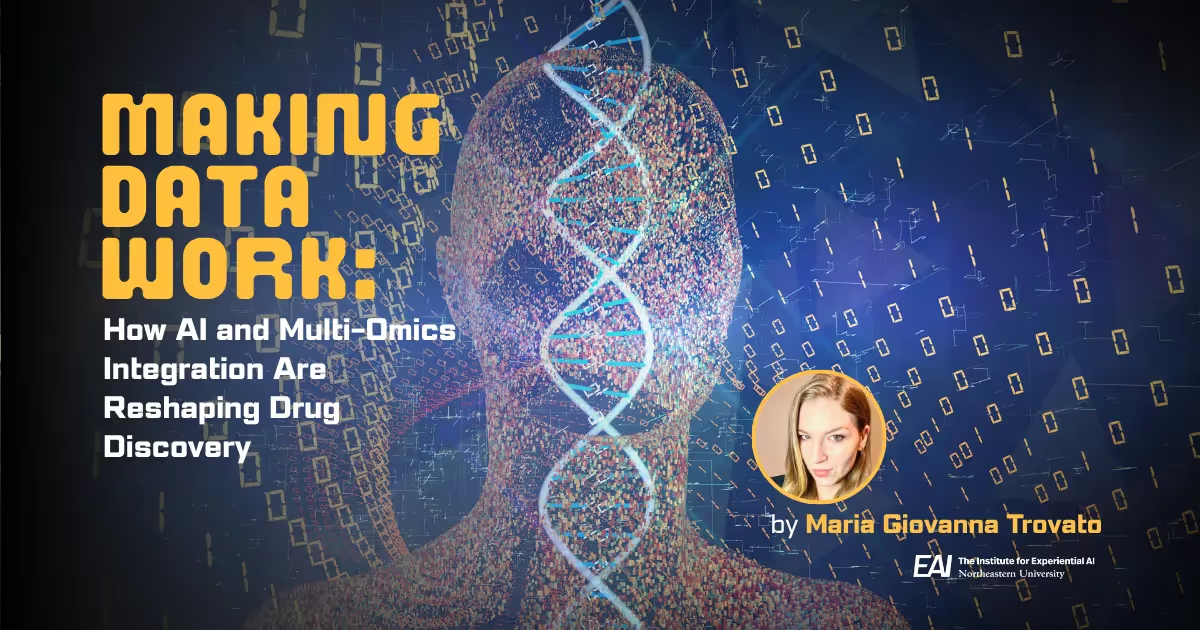Northeastern Workshop on AI + Physical Therapy Compared to Seminal Dartmouth Conference
.avif)
In a standing-room-only conference center in Boston, over 500 physical therapists, medical professionals, and health care leaders huddled together to learn how their industry was about to change forever. It was a meeting that would later be compared to the Dartmouth workshop, the seminal moment often described as the birth of artificial intelligence.
The speakers, all from Northeastern University, said the goal was simple: Paint a picture for an industry that, until very recently, believed itself beyond the hype of artificial intelligence. And who could blame them? Physical therapists work on their feet, helping patients with vexing physical ailments and injuries. It’s not clear what AI—essentially a kind of software—can add to the equation.
Eugene Tunik, associate dean of research and innovation at Bouvé College of Health Sciences and director of AI + Health at the Institute for Experiential AI, hosted the workshop, and put it this way: “Physical therapists can’t do their job if they can't physically put their hands on a patient, so how is AI going to improve clinical practice?”
Gene knows this space well. As a physical therapist and tenured professor, he has experience in virtually every aspect of the field from theory to practice. Part of his research vision is to prepare the healthcare sector for what he sees as a shift toward computational medicine and education, with AI leading the way.

“Half of the global population currently lacks access to essential health services, especially preventive care,” Tunik says. “Our future health depends on flipping the healthcare model from reactive to proactive. How can we better use sensing technology and data to fuel AI/ML algorithms to best capture health concerns before they become health crises?”
Physical Therapy in a Virtual World
At the American Physical Therapy Association (APTA) Combined Sections Meeting in February, Gene painted a picture for a packed audience of physical therapists. By 2040, he said, almost a quarter of all outpatient care, preventive care, long-term care, and wellbeing services will have moved to virtual delivery. That will require a major overhaul in everything from sensing technology to cloud computing to regulation.
In the PT space, it will require or lead to more resilient care delivery models, computational rehabilitation, and new curricula that can account for AI’s breakthrough predictive powers. Quoting an interview with cardiologist Dr. Eric Topol, Gene explained how AI will also deliver the “gift of time” to patients, freeing clinicians from the burden of dealing with electronic health records.
Quantifying Health
Some of these breakthroughs are already underway, hence the interest in the AI workshop. While AI’s more flashy applications deal in predictive text and image generation, the impact on healthcare is decidedly more measured. But that doesn’t mean it’s any less transformative. AI can and is delivering on a panoply of solutions that make life easier for patients, caregivers, and administrators. A few examples:
- Motion analysis: AI can serve as the brain for a suite of built-in cameras, pose detectors, pressure sensors, and other monitors, delivering critical insights about movement patterns, biomechanics, and recovery progress.
- Wearable devices: Wearable sensors can track heart rate, oxygen levels, muscle activity, joint movement, and even sleep patterns, providing physical therapists with a continuous stream of patient-specific information.
- Task automation: AI can handle a lot of the drudge work of running a PT facility, automating workflows and clinical documentation. It can also extract important data from health complaints, evaluations, and treatment plants, providing an overhead view of patient recovery for both clinicians and administrators.
- Virtual therapy: Home-based virtual exercises and therapy sessions mean rehabilitation can continue round the clock. Together with AI, virtual reality (VR), and wearable technologies, virtual therapy solutions elevate the potential for recovering at home.
Together, these tools honor the promise of the quantified self—the idea of providing critical health insights through data. Such quantification allows individuals to assess their health and outcomes by more objective means.
But there’s a catch. As helpful as AI may be in assisting patient recoveries and outcomes, there’s more to physical therapy than just numbers and computers. For many, many patients, physical rehabilitation is an emotional journey that depends on human contact and connection, and part of what it means to be a physical therapist is to establish meaningful bonds with patients. Let’s not forget the “therapy” part of physical therapy.
That’s why Gene favors the “human in the loop” model established by the Institute for Experiential AI. Whereas patient data can capture events and outcomes, they cannot effect them. Humans must be on hand to monitor patient performance, modify or provide assistance where necessary, and, crucially, motivate and encourage.
AI offers a way to assist patients and PTs in each of those tasks—with advanced sensing, adaptive algorithms for real-time task modification, longitudinal benchmarking, and even education through chatbots and Large Language Models (LLMs).

“The days of operating in silos are behind us for society to make the advances necessary to improve health and patient outcomes,” said Carmen Sceppa, dean of Bouvé College of Health Sciences. “The integration and collaboration of expertise across fields and sectors is the key to building human-centered, technology-driven systems capable of addressing the world’s most pressing health challenges.”
A Seminal Moment for PT
At the APTA workshop, Gene was joined by other Northeastern leaders who rounded out the ethical, technical, and clinical implications for AI in physical therapy: Sam Scarpino, director of AI + Life Sciences; Cansu Canca, director of Responsible AI practice; and Mathew Yarossi, assistant professor at Bouvé and core faculty in Institute for Experiential AI. Together, they established the foundations for a technological sea change that drew some glowing comparisons.
Most notably, Daofen Chen, program director at National Institute of Neurological Disorders and Stroke, had this to say:
“This workshop was to the PT professional what the Dartmouth workshop was to the AI field.”
For Gene, the comparison to the 1956 conference, considered to be the foundational moment for artificial intelligence, was hardly dramatic. Like most industries, the PT field is still trying to grasp what AI can and can’t do. And demystifying the technology is no simple task: Go too deep into the weeds and you risk alienating professionals who aren’t typically trained in computer science; go too shallow and the entire promise rings hollow.
That’s why Gene Tunik sees his job as striking a balance. With one foot planted in AI and the other in PT, he’s uniquely qualified to help those in both fields understand exactly what’s at stake. Not many academics or even universities are in a place to do that. Yet, to do anything less would be a disservice to the field that’s so dear to his heart:
“At the end of the day, physical therapists are very altruistic,” he says. “They want to see their patients get better and many will give the shirt off their back for them. I know all clinicians and physicians want to help their patients, but PTs are a whole different breed of altruistic. If there’s something that can help them better help their patients, like an AI technology, then they’re game—they just need to know where to begin.”
In October, the Institute for Experiential AI will host “AI for Healthier Lives,” an event focused on the intersection of AI, healthcare, and life sciences. Stay in touch here. Learn more about the Institute’s AI + Health practice here.




